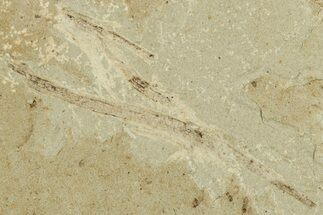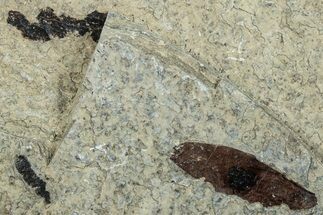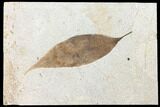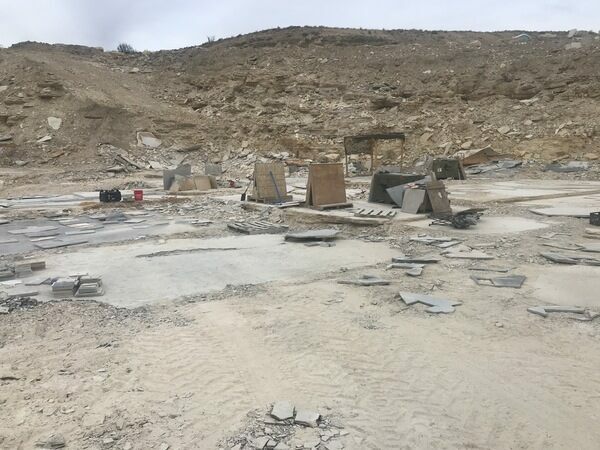This Specimen has been sold.
9.6" Fossil Allophylus Leaf - Green River Formation
This is a large (9.6") fossil leaf from the plant Allophylus flexifolia. Allophyllus is a genus of flowering plants in the Sapindaceae (Soapberry) family, members of which still survive today.
It is Eocene in aged and comes from the famed 18 Inch Layer of the Green River Formation. It's in great shape with fine detail and a dark coloration which contrasts well agains the shale.
This specimen includes a metal/acrylic stand.
It is Eocene in aged and comes from the famed 18 Inch Layer of the Green River Formation. It's in great shape with fine detail and a dark coloration which contrasts well agains the shale.
This specimen includes a metal/acrylic stand.
About Fossil Lake
50 million years ago, in the Eocene epoch, these fish thrived in Fossil Lake, which was fed by the Uinta and Rocky Mountain highlands. The anoxic conditions at the bottom of Fossil Lake slowed bacterial decomposition, prevented scavengers from disturbing corpses, and, most interestingly, suffocated creatures that ventured into the oxygen-starved aquatic layer. The result is a miraculous exhibition of Eocene biota: a subtropical aquatic community within sycamore forests, teeming with creatures such as freshwater stingrays, dog-sized horses, menacing alligators, early flying bats, and one of the first primates.
50 million years ago, in the Eocene epoch, these fish thrived in Fossil Lake, which was fed by the Uinta and Rocky Mountain highlands. The anoxic conditions at the bottom of Fossil Lake slowed bacterial decomposition, prevented scavengers from disturbing corpses, and, most interestingly, suffocated creatures that ventured into the oxygen-starved aquatic layer. The result is a miraculous exhibition of Eocene biota: a subtropical aquatic community within sycamore forests, teeming with creatures such as freshwater stingrays, dog-sized horses, menacing alligators, early flying bats, and one of the first primates.
About The 18 Inch Layer Of Fossil Lake
Specimens like this come from the coveted 18 inch layer of the Green River Formation, which produces darker and more detailed fish than the majority on the market. The rock from this layer is much harder and more durable than other layers in the formation, likely due to its initial deposition conditions in deep water. Because of these conditions, fish found in the 18-inch layer can be extracted whole and in excellent condition. This layer is typically collected at night using low-angle light to see the bump in the rock that the fish's backbone creates. They then cut these fish out and take them to a lab where the fish, which may be up to an inch under the surface of the rock, are meticulously extracted under microscope with hand tools.
Specimens like this come from the coveted 18 inch layer of the Green River Formation, which produces darker and more detailed fish than the majority on the market. The rock from this layer is much harder and more durable than other layers in the formation, likely due to its initial deposition conditions in deep water. Because of these conditions, fish found in the 18-inch layer can be extracted whole and in excellent condition. This layer is typically collected at night using low-angle light to see the bump in the rock that the fish's backbone creates. They then cut these fish out and take them to a lab where the fish, which may be up to an inch under the surface of the rock, are meticulously extracted under microscope with hand tools.
SPECIES
Allophylus flexifolia
LOCATION
Warfield's Quarry, Kemmerer, Wyoming
FORMATION
Green River Formation, 18 Inch Layer
SIZE
9.6" long on 12.7 x 8.5" rock
CATEGORY
SUB CATEGORY
ITEM
#131201
We guarantee the authenticity of all of our specimens.
 Reviews
Reviews














